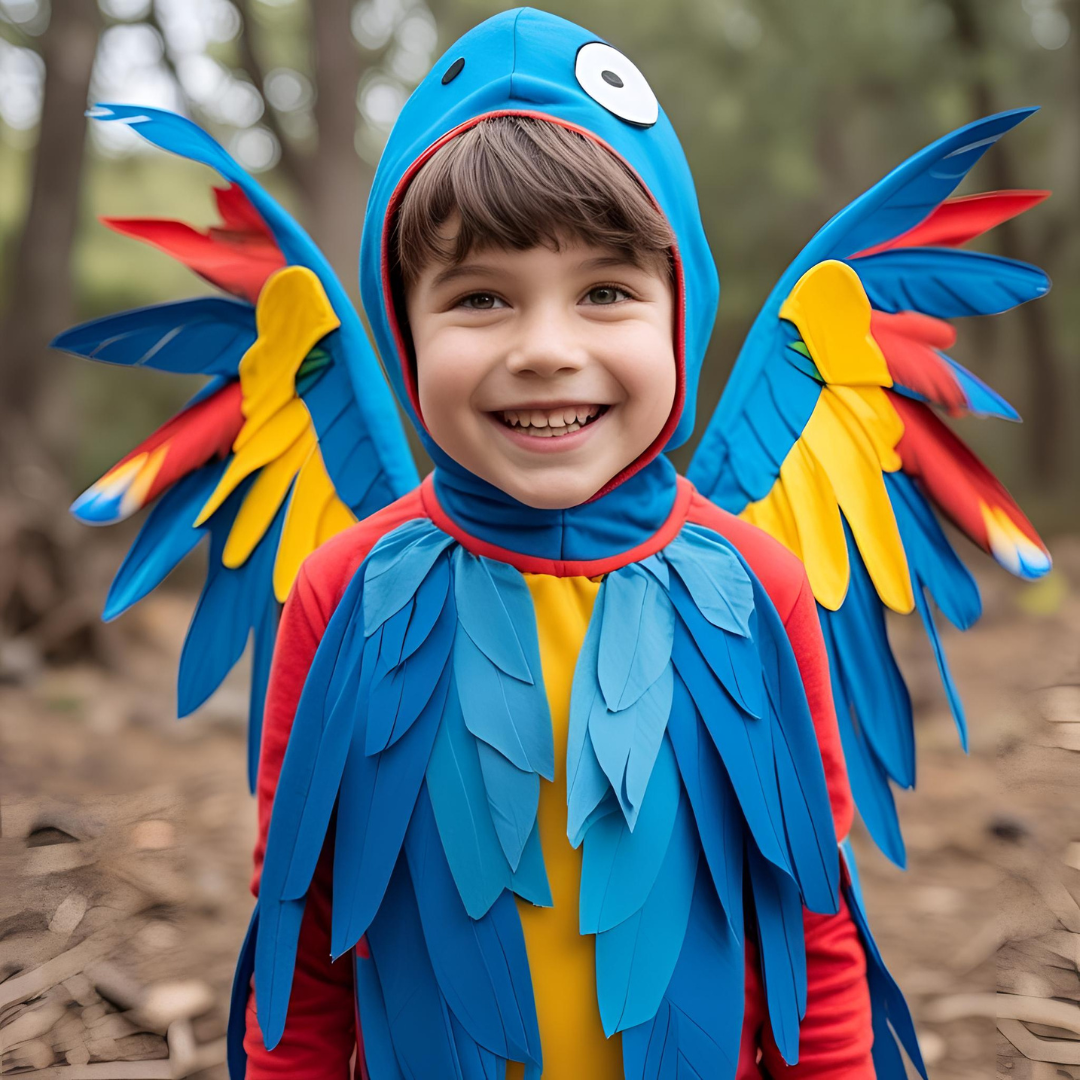Costumes are more than fun outfits — they’re gateways to imaginary worlds, discoveries, and learning. And when we combine this playful universe with respect for nature, the result is magical! In this post, you’ll discover 7 incredible ideas for sustainable animal-themed costumes, all made from reused materials and filled with educational value.
In addition to boosting children’s creativity, these costumes convey powerful messages about biodiversity, ecosystems, and environmental preservation — all in a lighthearted, fun, and affectionate way.
Why Choose Sustainable Costumes?
Before we dive into the creative ideas, here’s why sustainable costumes matter: traditional ones often rely on synthetic fabrics, single-use plastic, toxic glitter, and accessories that end up as waste after just one party. By choosing or making a sustainable costume, you:
- Teach the importance of reuse and creativity.
- Reduce the environmental impact of children’s consumption.
- Value handmade processes and emotional connections.
- Promote more conscious and responsible consumption from an early age.
Ready to explore these fun, eco-friendly ideas?
1. Curious Giant Anteater
How to Make It: Use a dark gray or black t-shirt or bodysuit as a base. Roll old newspaper into a cone shape to create the long snout, and cover it with dark fabric or an old pair of tights. Make a white stripe with leftover fabric or non-toxic fabric paint to mimic the anteater’s iconic coat pattern.
Educational Message: Teach your child about how anteaters eat ants and termites and how they’re threatened by wildfires and road accidents. It’s a great opportunity to talk about forest protection and wildlife safety.
Extra Tip: Add small paper “ants” glued to the shirt for an interactive look!
2. Flying Blue Macaw
How to Make It: Reuse blue fabric scraps or old clothes to cut large feather shapes in different shades. Glue them onto an old t-shirt. Create lightweight wings from cardboard or folded fabric, and make a small beak out of folded and painted paper.
Educational Message: The Spix’s Macaw was almost extinct in the wild due to illegal wildlife trafficking. Today, it’s being reintroduced with help from biologists and NGOs. This costume is a great way to talk about freedom, protection, and love for native birds.
Suggested Phrase: “To fly is to live in freedom!”
3. Golden Lion Tamarin Guardian
How to Make It: Take an old beanie and sew strands of orange yarn around it to resemble the tamarin’s mane. Wear matching-colored clothes to complete the look. You can also use shredded fabric or felt to enhance the details.
Educational Message: The golden lion tamarin is a symbol of the Atlantic Forest. Talk about efforts to protect its habitat and explain how deforestation affects all forest dwellers.
Extra Activity: Watch short videos about tamarins and invite your child to draw their ideal forest.
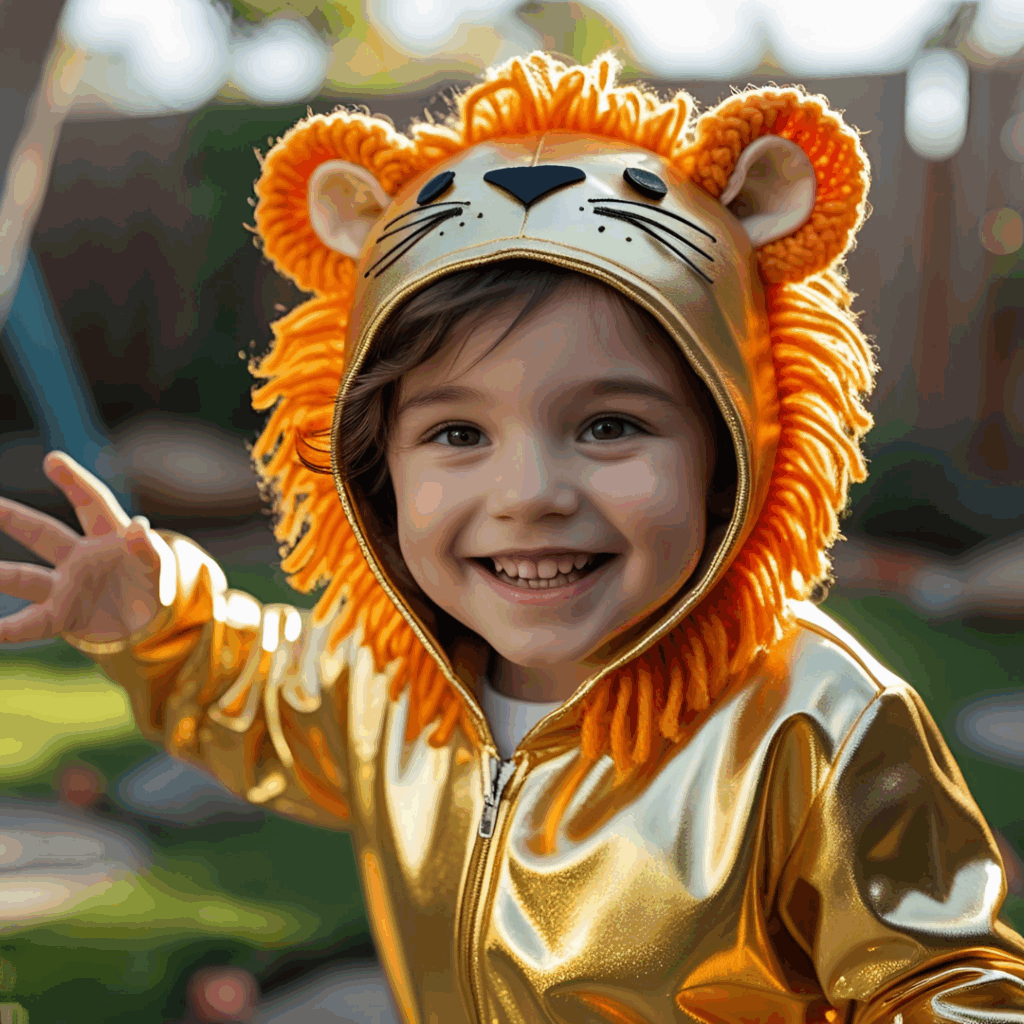
4. Armadillo Defender
How to Make It: Cut rounded shapes from cardboard to resemble the armadillo’s shell. Attach them to the back using fabric straps. Paint in earthy tones and wear beige or brown clothes underneath.
Educational Message: This unique animal rolls up to protect itself. It’s an excellent way to introduce the Caatinga biome and how it’s under threat due to environmental degradation.
Fun Fact to Share: The three-banded armadillo was Brazil’s 2014 World Cup mascot!
5. Capybara, Friend of the Rivers
How to Make It: Use a brown shirt as the base. Make a simple mask from recycled cardboard and paint it by hand. Add ears and a snout using felt or reused foam.
Educational Message: Capybaras live near rivers and wetlands. Use this opportunity to discuss the importance of clean water, riparian forests, and protecting aquatic ecosystems.
Suggested Phrase: “Every drop matters!”

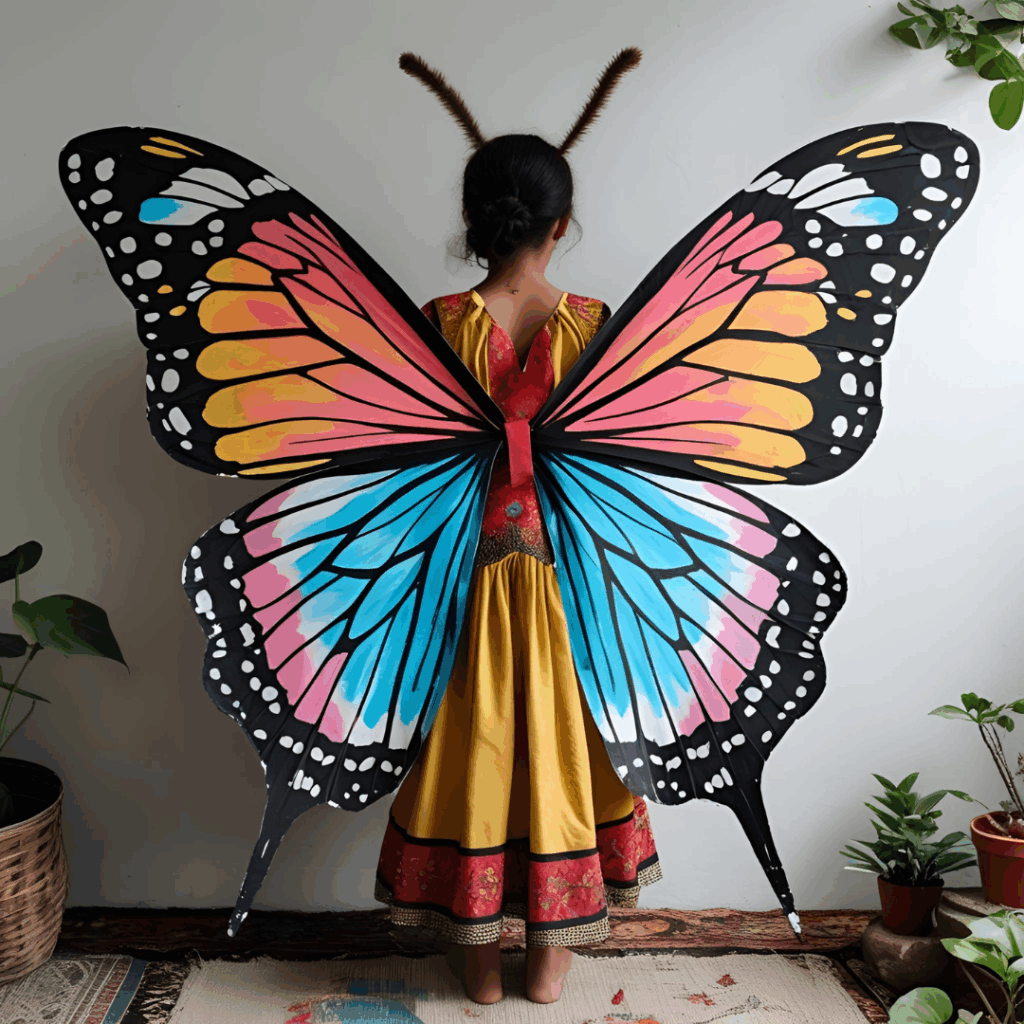
6. Pollinator Butterfly
How to Make It: Cut large wings from old sheets, reusable bags, or scrap fabric. Paint them with natural or non-toxic paints using sponges or brushes. Attach the wings with elastic bands or sew them to a shirt.
Educational Message: Butterflies play a key role in pollination and plant reproduction. Teach your child about their life cycle and how to care for plants and pollinators.
Extra Activity: Plant butterfly-friendly flowers together and observe their growth!
7. Forest Leader Jaguar
How to Make It: Leopard print clothes are easy to find in thrift stores or at home. Make ears with cardboard glued onto a headband or fabric sewn in place. Use non-toxic face paint to draw whiskers and details.
Educational Message: Jaguars are the largest wild cats in the Americas and are vital to maintaining the food chain. Unfortunately, they’re at risk due to habitat loss and illegal hunting.
Suggested Phrase: “I’m the forest’s guardian!”
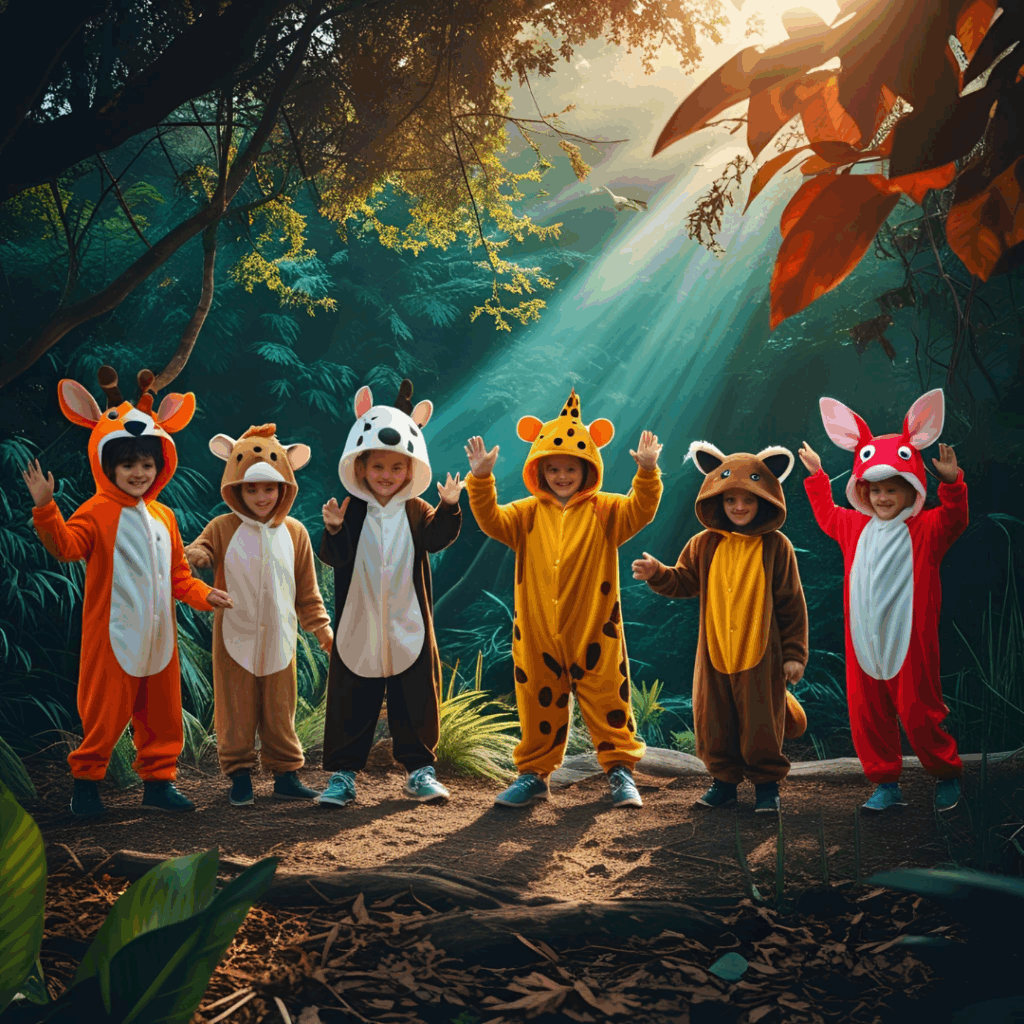
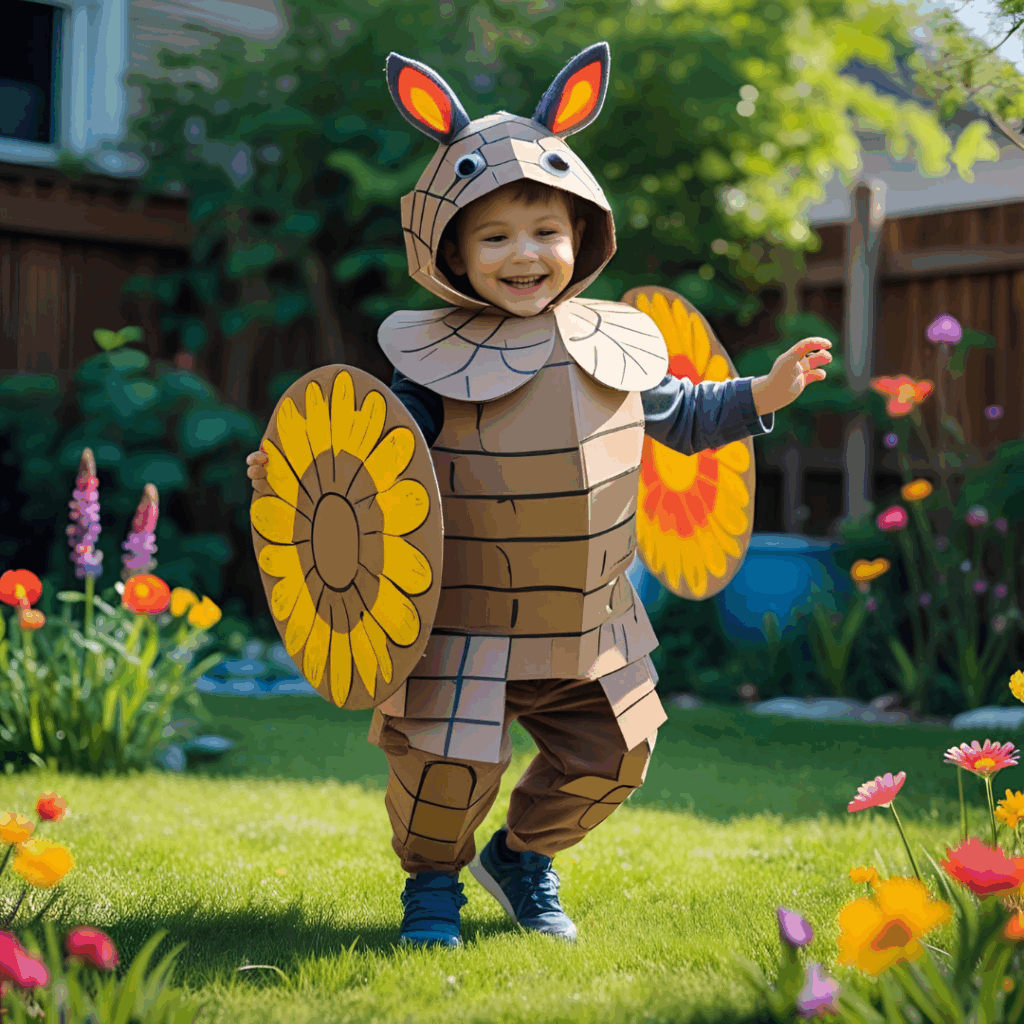
Bonus Tips for High-Impact Sustainable Costumes
- Avoid: Disposable plastic, conventional glitter, and non-biodegradable materials.
- Prefer: Water-based glue, non-toxic paints, reused fabrics, and hand-sewn details.
- Create Together: Involve your child in the process. Let them choose colors, help with cutting, and build their character — this deepens the bond and learning.
- Add Educational Messages: Use phrases like “Save the forest!” or “I’m rare, protect me!” directly on the costume.
What to Do After the Party?
The sustainability journey doesn’t end when the party’s over. Here’s how to keep the cycle going:
- Reuse: Store the costume for future events or use it during imaginative play at home.
- Share: Donate to schools, daycare centers, NGOs, or other families.
- Recycle: Break it down and reuse parts in new craft projects.
- Document: Take photos, write a story with your child about the character, and create a memory book or keepsake.
A Purposeful Conclusion
Creating sustainable animal-themed costumes is more than a craft — it’s a lesson in citizenship, love for nature, and artistic expression. When a child dresses as a butterfly, a jaguar, or a capybara, they connect with biodiversity and learn in a joyful, memorable way that every living being matters.
It’s a beautiful opportunity to combine environmental education, conscious consumption, and creative childhood experiences, all wrapped in love and color.
🌿 So, how about starting this fun and eco-friendly journey today? Pick a favorite Brazilian animal, gather some simple materials, and bring your sustainable costume to life — with purpose and creativity!

